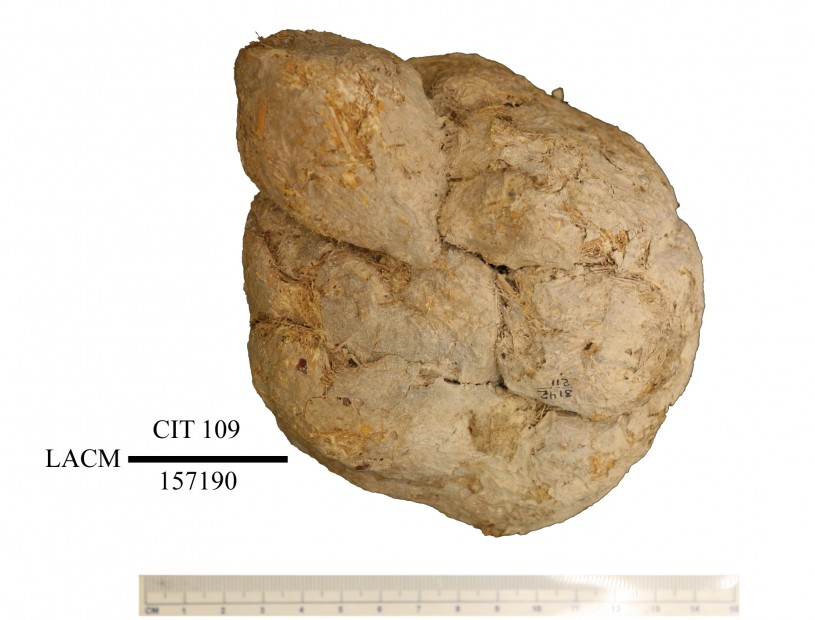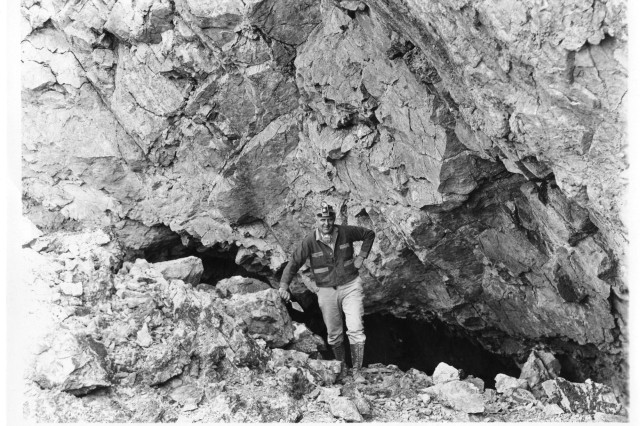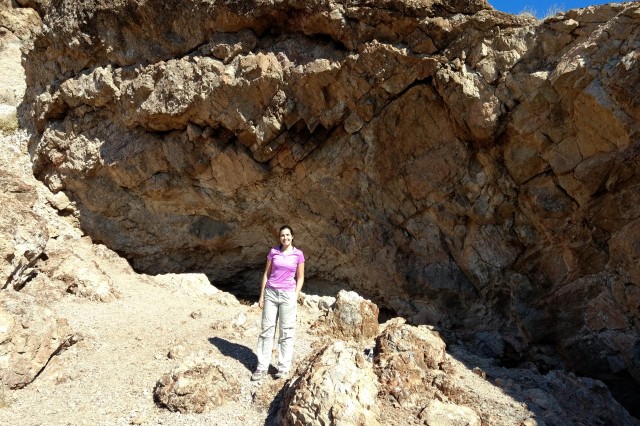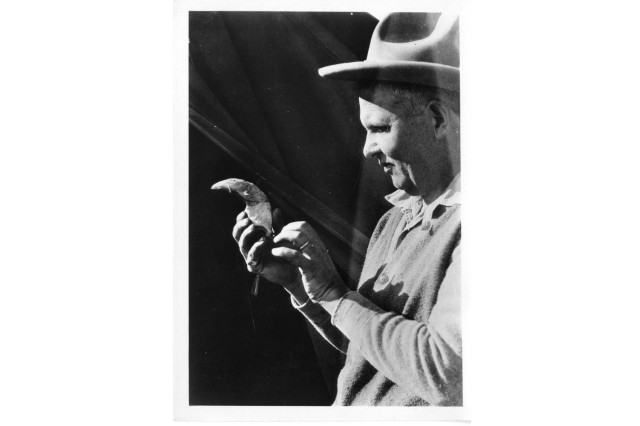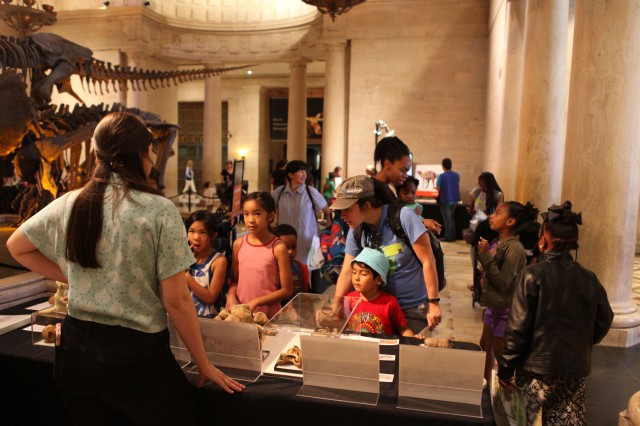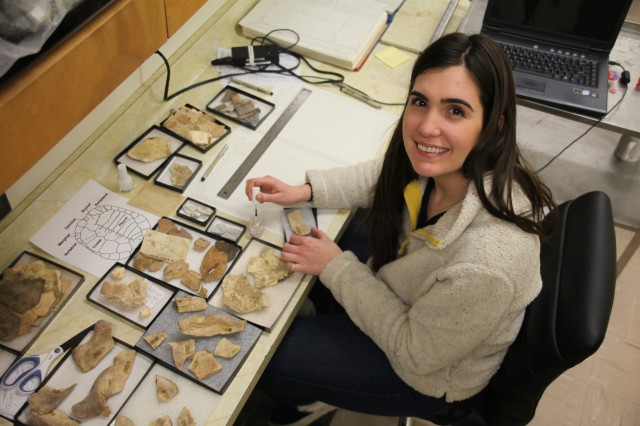Gypsum Cave

Introduction
Collections staff and volunteers actively identify, inventory, document, label, scan, and file disparate types of materials and data such as fossils, field notes, artwork, and accessory information. Persons entrusted with caring for collections and their associated data follow best practices and standards to protect against deterioration, preserve pertinent information, increase accessibility, and thereby facilitate use of the information. The Gypsum Cave curation project described below details the history, importance, and findings of this particular locality while depicting the processes undertaken by Vertebrate Paleontology collections staff to curate, conserve, and digitize a historical collection.
Project Setting
Just outside of Las Vegas, Nevada, lies Gypsum Cave in the eastern foothills of the Frenchman Mountain. In 1930, the cave was scientifically excavated by field crews from both the Autry Museum of the American West (Southwest Museum) and the California Institute of Technology (Caltech). The driving question behind the expedition was to explore potential associations between early human interactions with Ice Age megafauna.
The artifacts and fossils from this expedition later became integrated into different museum collections. The archaeological materials are currently under the stewardship of the Autry Museum while the vertebrate fossils from Caltech became part of the Vertebrate Paleontology collections at the Natural History Museum of Los Angeles County in 1957.
Site Importance
The arid yet cool climate within the cave allowed for extraordinary preservation of Pleistocene fossils- most notably soft tissue, hair, and dung of the smaller species of extinct ground sloth, Nothrotheriops shastensis. The rare mummification of this material allowed for the preservation of DNA from over 11,000 years ago. With access to ancient DNA from an extinct species, paleontologists have the unique opportunity to learn more about the diet and behavior of the extinct Shasta ground sloth as well as the environment in which they lived.
Other Pleistocene mammals previously known from the site include: dire wolf (Canis dirus), stilt-legged horse (Haringtonhippus francisci), two genera of camel (Hemiauchenia, Camelops), deer (Odocoileus), and big horn sheep (Ovis canadensis). Previously reported taxa originally represented by uncataloged elements include other vertebrate classes such as amphibians (frogs), reptiles (lizards, snakes, desert tortoises), and birds (condor).
History of Work
The leader of the expedition, Mark R. Harrington, published a monograph of the archaeological materials from the site in 1933 (Gypsum Cave, Nevada: Report of the second sessions expedition. Southwest Museum Papers 8:3-197). Despite the known importance of the vertebrate fossils, little work had been done on the paleontological materials. Early contributions include a study by J.D. Laudermilk and P.A. Munz in 1934 (Plants in the dung of Nothrotherium from Gypsum Cave, Nevada. Contributions to Palaeontology) as well as by B.H. Brattstrom in 1954 (Amphibians and reptiles from Gypsum Cave, Nevada. Bulletin of Southern California Academy of Sciences 53(1):8-12). In addition, C. Stock published an article in 1931 detailing his original interpretation of the possible joint occupancy of early humans and Ice Age megafauna at the cave (Problems of Antiquity presented in Gypsum Cave, Nevada. The Scientific Monthly 32(1): 22-32).
About the Project
After a 60 year span since the collection was initially acquired by our museum, a grant from the Bureau of Land Management (Cooperative Agreement No. L17AC00191) funded a two year effort to complete the curation, conservation, and digitization of the vertebrate fossils from this historic collection. An emerging professional, Juliet Hook, was hired as an Assistant Collections Manager to work on the project and received training in museum best practices.
The initial task involved a condition assessment of the collection to set priorities and determine a workflow for the project that would satisfy the grant milestones. Preliminary work involved locating 150 previously cataloged fossils, documenting the extent of unidentified elements and taxa, assessing the current storage environment, and identifying ways to improve the organization and accessibility of the collection. The next steps were to compare elements and make identifications of the uncataloged material, organize the material by taxonomic groups, catalog and label specimens, house the specimens using archival materials, and digitally photograph the collection and its associated data.
As a result of this grant-funded project, over 1,500 fossils were identified, 701 fossils were cataloged and labeled, and over 400 Caltech and Autry Museum field tags from the 1930's excavation were digitized. All of material is now housed archivally which will mitigate against potential data loss due to problems such as abrasion in overcrowded drawers and others forces of deterioration. The collection is now readily accessible to researchers through the department and the general public through outreach events.
The specimen data and images will be publicly available via the Vertebrate Paleontology department Search the Collections Form.
